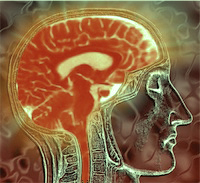


Please enjoy a copy of our article in Behavioral and Brain Sciences:
Niedenthal, P.M., Mermillod, M., Maringer, M. & Hess, U. (in press). The Simulation of Smiles (SIMS) Model:Embodied Simulation and the Meaning of Facial Expression. [PDF] [PMID]
Research
We conduct research on the representation and processing of emotion.
Currently our research activities conform to three major programs:
Concepts and conceptual grounding. One major interest is the nature of
concepts and their mental grounding. The specific conceptual content
under study is emotion. Past work in this area examined the role of
emotion in conceptual coherence. Much on-going research examines the
ways in which emotion concepts are supported by simulation in
sensory-motor systems. This extension of theories of embodied cognition
to the study of emotion and emotion knowledge is discussed in a chapter
on emotion concepts in the most recent Handbook of Emotion (2008), and
a series of four studies are described in an in-press paper in the
Journal of Personality and Social Psychology. The goal of the
supporting studies is to examine the causal role of embodied simulation
in tasks for which we can claim à priori that correct
performance requires access to meaning. The type of processing in such
tasks can be compared to those in which correct performance can be
based on processes that are more superficial or that do not require
recourse to meaning. Other work in a similar vein tests hypotheses of
theories of embodied cognition using basic object categories as the
concepts of interest.
Cognition-perception interactions. Other research explores interactions
between cognition and perception. This interest is represented by our
earlier work on the influences of emotion in such low-level processes
as the encoding of words, lexical access, and the perception of faces.
Recent research examines such interactions in work on the perception of
facial expression of emotion, as outlined in a review piece in Science
(May, 2007). We are currently developing a model of the perception of
the smile. The model seeks to account for the triggers of embodied
simulation in the recognition and interpretation of facial expression.
In addition, it attempts to sort out the types of simulation that
support different cognitive tasks. A second goal of the research is to
account for the development of differences in the perception of the
smile (and ultimately other facial expressions) across culture.
Emotion and temporal perception Emotions have important relations to
processes of attention, memory, and are constituted in part by
physiological processes, all of which are inputs to the mechanisms that
support the subjective experience of time. In our work we examine the
effects of emotion in the perception of short durations. Our
already-published work in Cognition and Emotion and the journal Emotion
relies on findings from temporal bisection tasks and statistical
analyses that allow us to distinguish effects of arousal from those of
attention on time perception. Findings point to strong effects of
arousal at short durations. At longer intervals and in different types
of time perception tasks, emotions are likely to largely affect
attention directed to the passage of time per se (in prospective time
estimation) and result in different types of biasing of temporal
perception.
If you love the paintings of Enjoyment, Affiliative, and Dominance smiles on the home page and in the banner (as I do), they were commissioned by Tine Hohenberger at grafikdesign + illustration, Munich.
